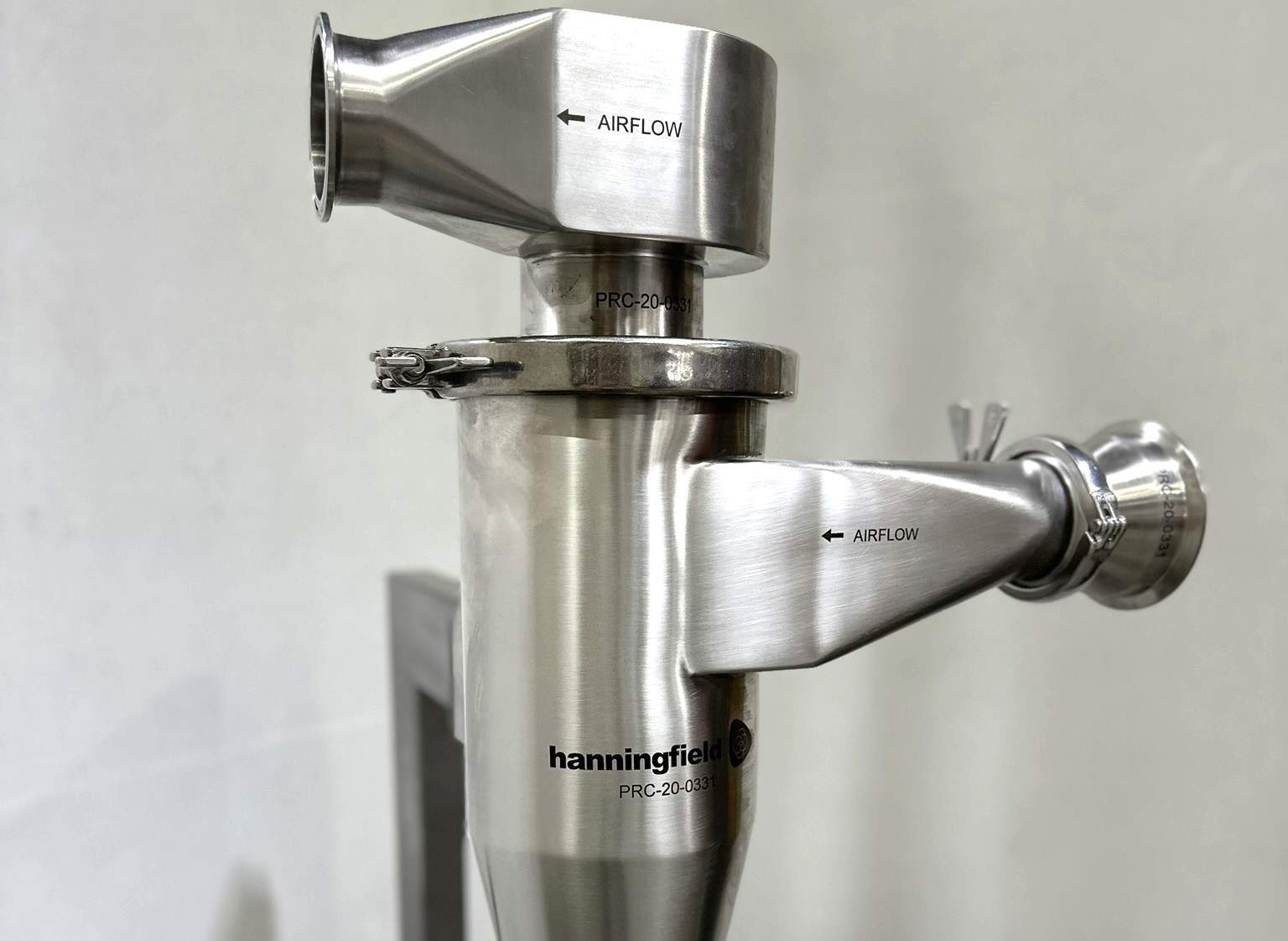
Introduction
As rules and regulations concerning batch loss reconciliation continually become more stringent, keeping up-to-date with ever-tightening legislations is becoming much more difficult.
This article outlines the drawbacks of not accounting for loss of product (e.g. APIs) through an extraction system, and how this can affect the process and ultimately cost money. It highlights how using filterless cyclone technology to improve batch loss reconciliation is a cost-effective solution, as well as briefly touching on the science behind how it operates.
The Problem
Not accounting for the loss of a product can prove costly as well as time consuming. Stopping work to change HEPA filters that do not need to be changed, paying for correct disposal in accordance with GMP guidelines for API manufacturing, and wading through the endless accompanying paperwork, all takes a great deal of time. Nonetheless, dust extraction remains an imperative system that must be present when working with processes that can create dust or particles that can become airborne and inhaled.
All air that exits the extraction exhaust from any pharmaceutical processing plant must be clean and comply with strict regulations. In a standard extraction system, the air that passes through the system contains product particles from the manufacturing processes. This can cause the extraction HEPA filters to block more quickly, compromising the airflow and efficiency of machines and ultimately jeopardising the integrity of products being made.
More recently, governing bodies are tightening regulations, ensuring that products used in the manufacture of pharmaceuticals can be accounted for, especially APIs; hence the need for an efficient solution for capturing lost material.
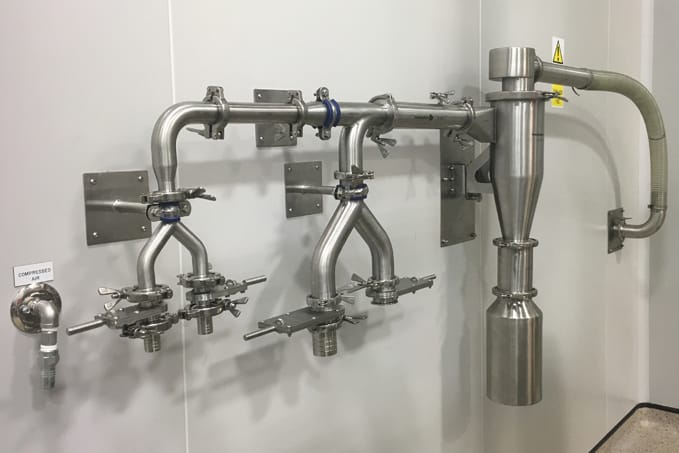
The Solution
Introducing a cyclone into a dust extraction system, that can recover up to 99.9% of product passing through it, dramatically improving the life of HEPA filters. It also enables operators to easily account for product that would otherwise be escaping through the extraction system, allowing for accurate and compliant batch loss reconciliation.
A cyclone is easily retrofitted to an extraction hose within the process room. The catch pot at the bottom of the cyclone allows the excess material (that would have previously been lost in the HEPA filter) to be accounted for. Safe change can be fitted to the cyclone, allowing the operator to remove and handle the catch pot without being exposed to the product.
Cyclone technology works by creating a vortex within the body of the cyclone. By achieving a vortex, a centrifugal force acts upon the dust particles, driving them in a circular path away from the centre of the cyclone and eventually down into the lower part of the body.
In the lower part of the cyclone, a vortex breaker slows the particles enabling them to fall into the catch pot where the excess product can be accounted for, recorded and, if protocol permits, can be reintroduced. The clean, particle-free air then exits at the top of the cyclone.
The cyclone has been designed with no moving parts; therefore, it is completely ATEX exempt and means that installing the equipment is hassle-free and requires very little validation.
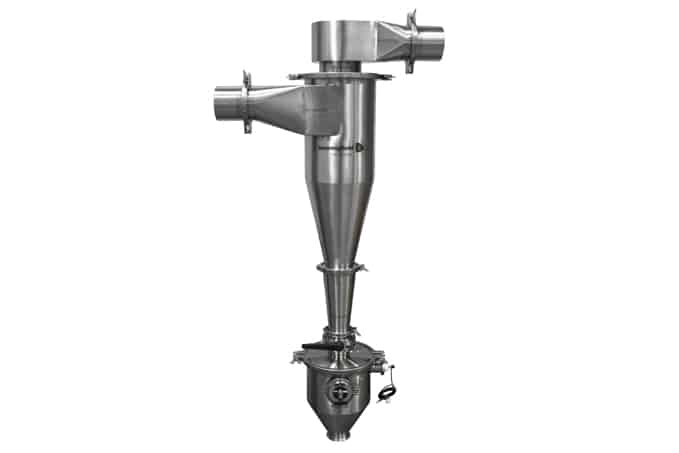
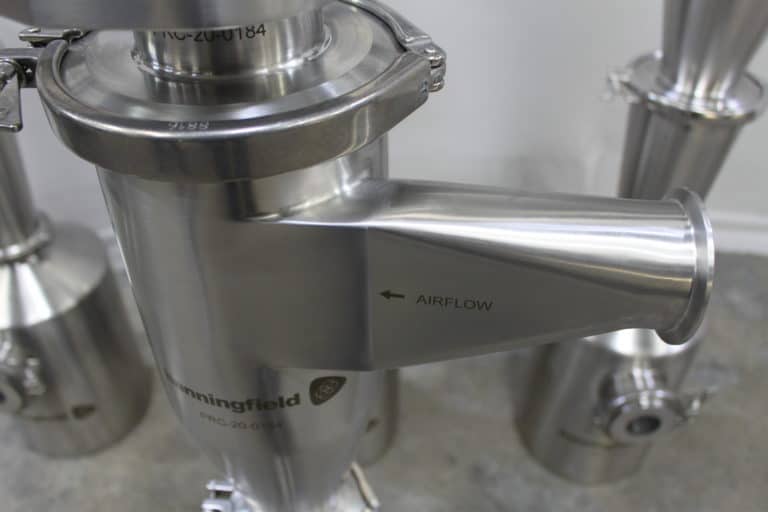
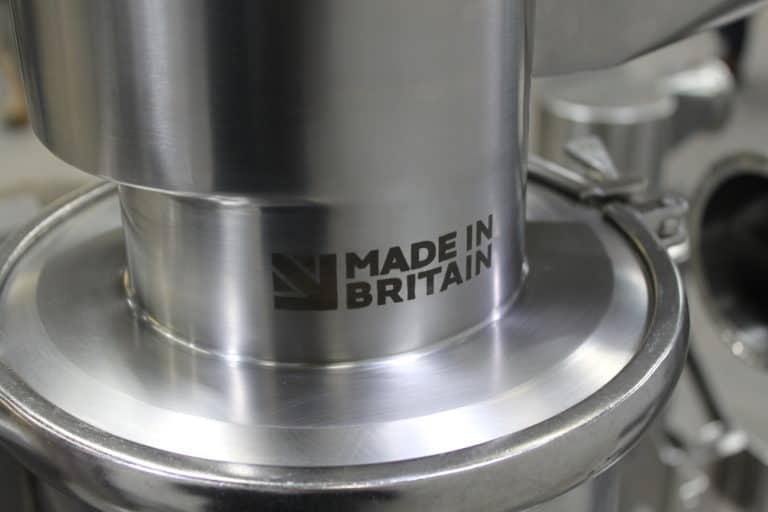
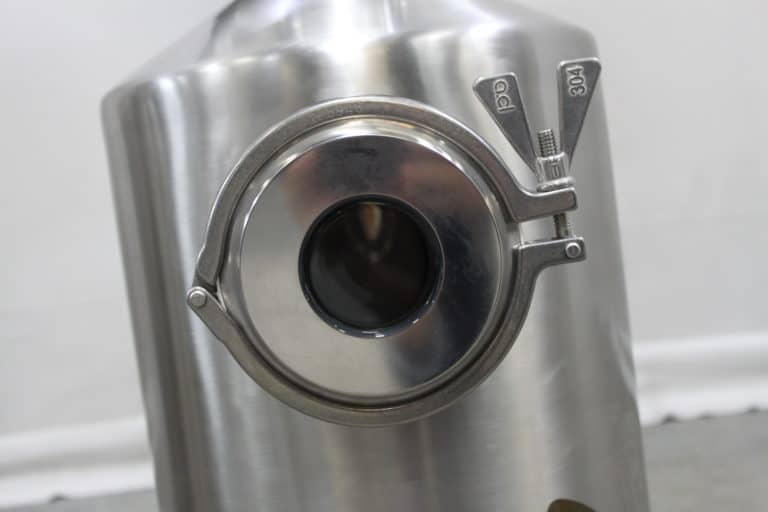
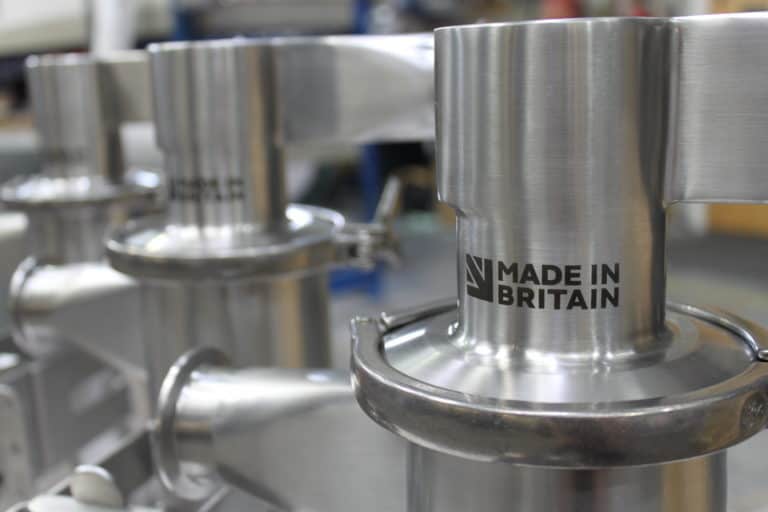
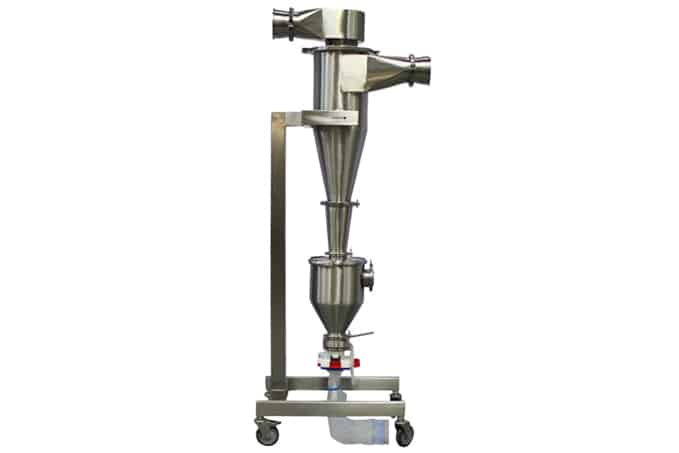
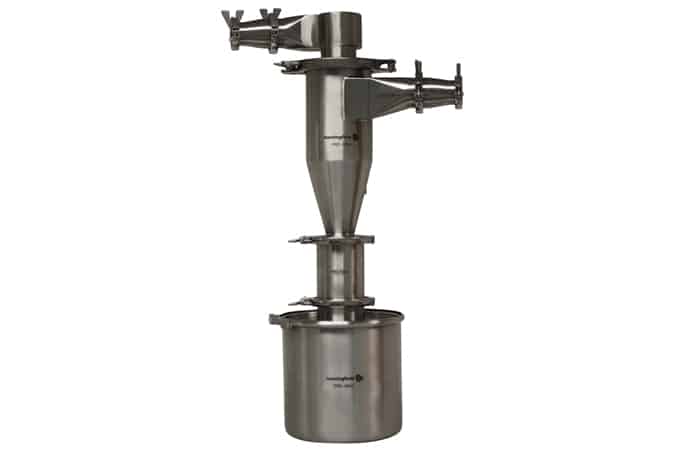
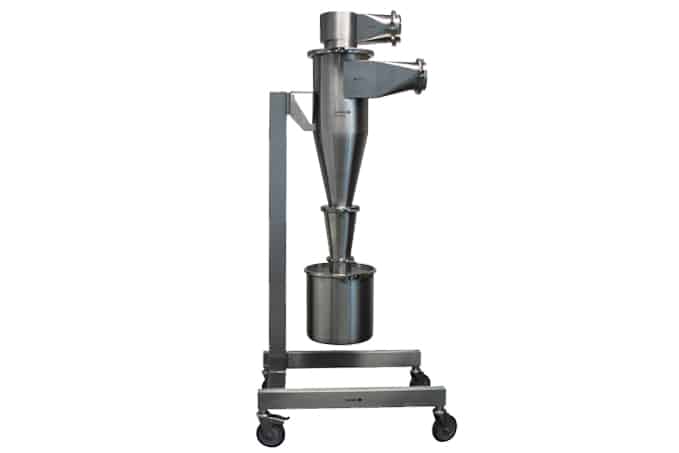
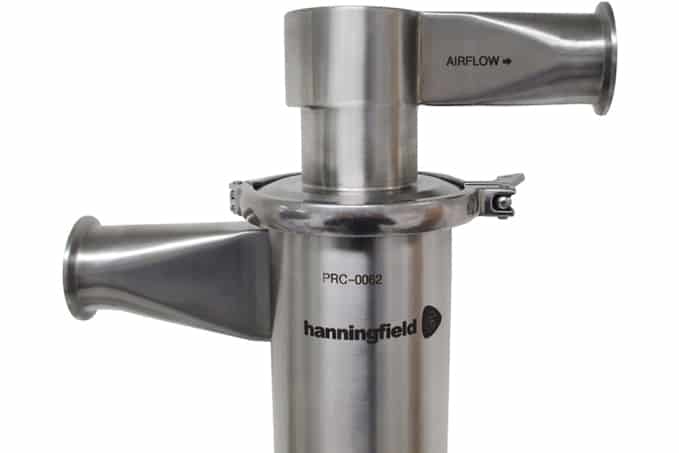
Conclusion
Introducing a Haningfield powder recovery cyclone to recover product that would otherwise be unaccounted for, allows manufacturers to comply with batch loss reconciliation regulations. It also greatly extends the life of the HEPA filters, reduces downtime and saves money.
The design of the Hanningfield Uni-Dust cyclone allows no pressure drop in the extraction system, thus having no adverse effects on other process rooms that use the same extraction system; making a cyclone very easy to introduce into any process.
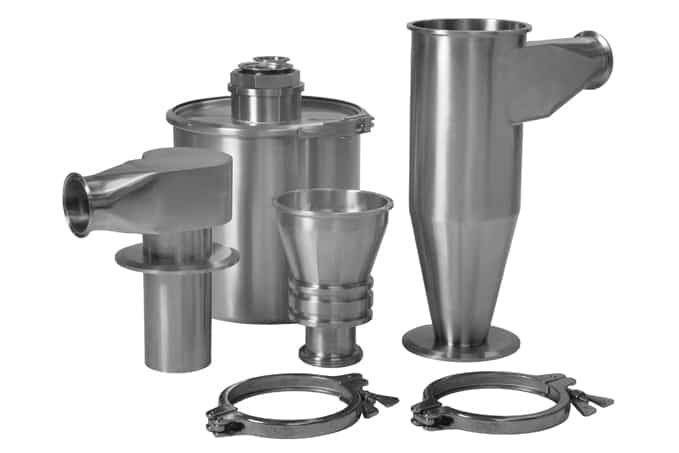
Get in Touch
If you would like to speak to one of our experts regarding our Powder Recovery Cyclones or you would like a quote for one of our products, send us a message using our Contact Form or call us on +44 (0)1702 549 777.
To keep up-to-date with the latest news from Hanningfield you can follow us on LinkedIn.